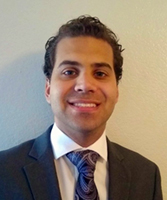Seminars
Dr. Matthew Rolchigo
Computational Sciences and Engineering Division
Oak Ridge National Laboratory
Cellular Automata Modeling of As-Solidified Grain Structure for Use in Additive Process-Microstructure-Property Workflows

ABSTRACT: Cellular automata (CA) based modeling of the liquid-solid phase transformation has been successfully used in the literature to accurately and efficiently model grain size, shape, and texture distributions in additively manufactured (AM) alloys. This talk will discuss ExaCA, a specific microstructure model developed as part of the ExaAM project to leverage the GPUs of Frontier to model AM process-microstructure-property relationships. ExaCA’s ability to use GPUs allows explicit prediction of grain structure at scales and with runtimes not previously possible, and ExaCA use cases within the ExaAM project workflows and as part of the Manufacturing Demonstration Facility’s Digital Factory will be detailed. The ability of ExaCA to perform large ensembles of microstructure calculations will be utilized to understand the fundamental mechanisms behind texture development in AM processing as related to the melt pool geometry, hatch spacing, layer height, and scan rotation. Validation of ExaCA microstructures against analytical models and Electron Backscatter Diffraction data will be shown, and future work to improve the model’s accuracy will be discussed as well.
BIOGRAPHY: Matthew graduated from the University of Minnesota in 2014 with a bachelor’s degree in Materials Science and Engineering and from Iowa State University in 2018 with a PhD in Materials Science and Engineering. His graduate research focused on cellular automata-based methods for various transport and phase transformation processes associated with Laser Engineered Net Shaping (LENS) microstructure development. Matthew was a postdoctoral research assistant at Lawrence Livermore National Laboratory from 2019 through mid 2021 and has since been a research and development associate at Oak Ridge National Laboratory. His work at the national labs has focused on understanding the physics of process-microstructure relationships in Selective Laser Melting (SLM) processing of metals, and he has been the primary developer of ExaCA, an exascale-capable cellular automata code that predicts the as-solidified grain structure of additively manufactured metals. His research interests include modeling of solidification fundamentals, process and microstructure modeling tools and frameworks, and parallel programming for additive manufacturing applications.